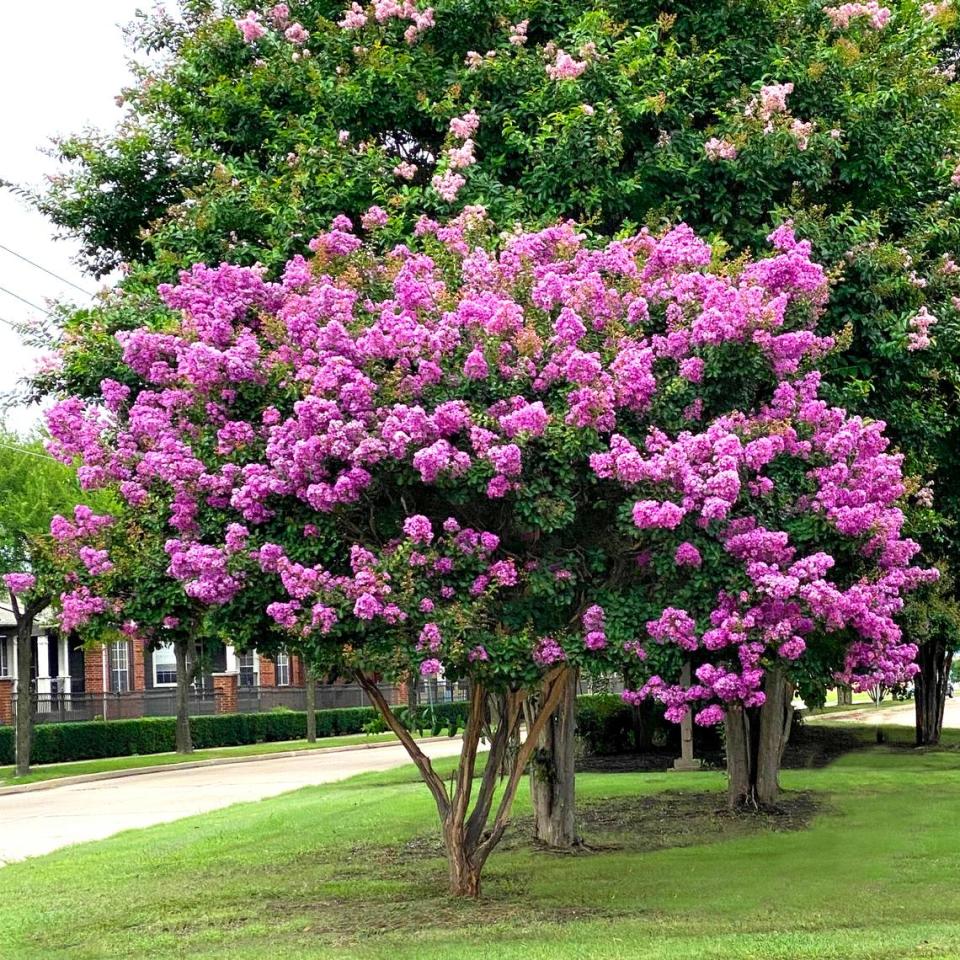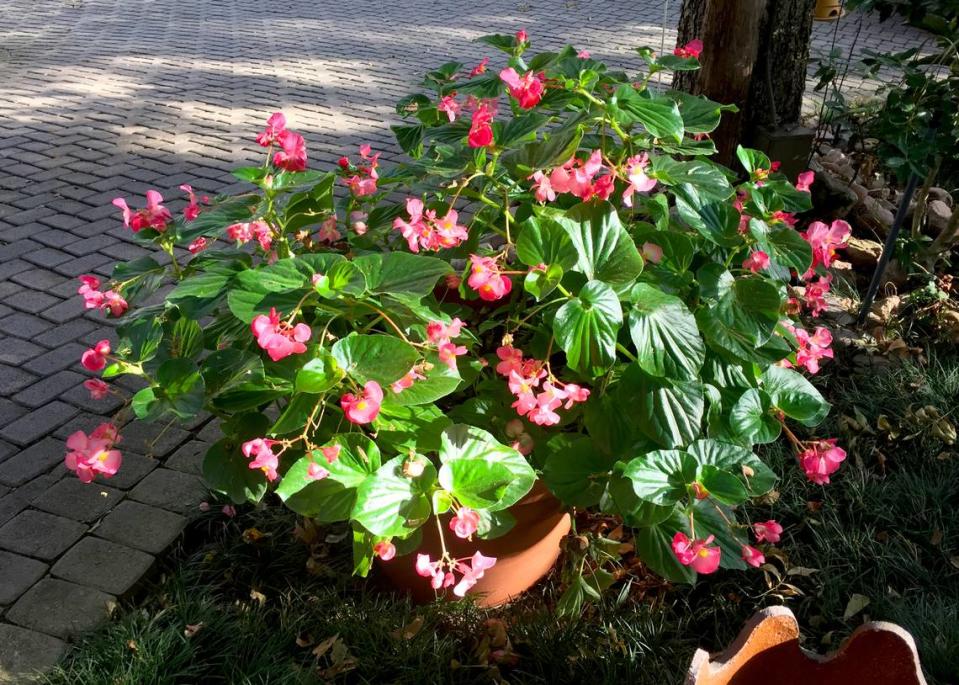If I could only have five plants for color in my North Texas landscape in the summer, these are the ones I would choose from the long list of candidates. Mind you, I would be leaving a lot of beautiful plants in the row, but I would have five plants that would grow and perform despite all the heat and still look just as good when the cool fall fronts finally roll into town.
Catawba crape myrtle. We’ve had our little “Catawba” chat here before. I admit that as I’ve gotten older, I’ve learned that it’s okay to like purple. (Fans of Horned Frogs will, of course, tell us that this has always been the case.) Purple crape myrtles blend with all the other colors of crape myrtles: red, pink, white and lavender. Where others may clash, purples play well.
But Catawba isn’t just any old purple myrtle. It is a rich medium purple color that blooms three or four times a summer. The flower heads are borne atop 15 feet of plants, meaning this plant stays neatly contained and compact. Even those who still feel compelled to barbarically chop off the tops of their tree-shaped myrtles will find it difficult to convince themselves to do so with Catawba. (Hurrah!)
Catawba was the first cultivar introduced by Dr. Donald Egolf of the United States National Arboretum. I had the great fortune to meet and work briefly with Don in his research on myrtle myrtle. He then introduced 28 other varieties with Indian stock names, all superior types. But Catawba is still my favorite.

Gold Star Esperanza. This would be my long background bed showstopper. I love bright, buttery yellow flowers, and this plant keeps them appearing month after month. It is a large annual for us here in the Metroplex, growing 4 to 6 feet tall and wide. However, in South Texas, where winters are milder, it can form a small shrub or even a short tree.
Renowned horticulturist Greg Grant found and selected this superior strain for its continuous flowering habit. Botanically speaking it is Tecoma Stans. The native variety of Southwest Texas doesn’t bloom until much later in the season, but Greg brought us this much improved form. This is why you’ll want to buy Gold Star Esperanza with the nameplate and the Texas Superstar® label, so you can be sure you’re getting the real deal and not just a pretender.
Coleus. In this case I am not going to specify a cultivar. There are so many. The University of Florida has done heroic breeding work with this amazing group of annual foliage plants over the past 25 years. That explains why we see a steady supply of spectacular varieties that are (a) reluctant to bloom and (b) tolerant of the Texas sun for most or all of the day. Your local nursery has nice specimens for sale. I have been growing coleus for 65 years. I’ll show them in more detail here in a few weeks.


Dragonwing Begonias. I’m a big fan of all wax leaf begonias anyway. When I saw my first Dragon Wing with its oversized leaves and gigantic flowers, it was love at first sight. I bought that plant. It came in a large hanging basket and it wasn’t cheap. But I could imagine it being repotted in a very large patio pot along our courtyard, and that’s exactly what I did. It never missed a beat. By the end of that growing season it was a true work of art.
Dragon wings grow 6 to 8 inches long and wide. Their glossy green leaves grow 2 to 3 inches long and the flowers are larger than golf balls, cherry red or bright pink. The plants grow best with some early morning sun and then light shade for the rest of the day. They need constant moisture and they grow best if you feed them every time you water them. Use a water-soluble plant food and a siphon dosing device. Feed them at least weekly.


Crotons. It’s strange, isn’t it, that two of my five favorite summer color plants are foliage plants. And they both start with the letter ‘C’. And that doesn’t end with ‘-aladiums’ either. Don’t get me wrong: Caladiums would be my second list of five great summer plants, but crotons in all their leaf shapes and plant sizes have been part of every summer color planting in my landscape for the past 45 years.
However, my plants are always in pots and never in beds. I start with 5 gal. plants, often purchased in September, while nurseries have their fall decor on sale. They are nestled among piles of corn, squash and hay bales. But once Halloween is over, I won’t let my beautiful crotons freeze. They are waved straight into my greenhouse to wait for next spring. That’s when I repot them into larger decorative containers so they can grow in the warm Texas summer.
Crotons color best when they receive early and mid-morning sun and then are protected from the late morning and afternoon rays. You’ll get many inches of new growth in bright shades of red, orange, yellow, burgundy and of course green.
I have grown crotons in pots as large as 42 inches in diameter. Those plants eventually grew 8 to 10 feet tall and became architectural anchors in our summer gardens. I was fortunate to have a greenhouse to overwinter them, but a light conservatory would have sufficed for several years.







